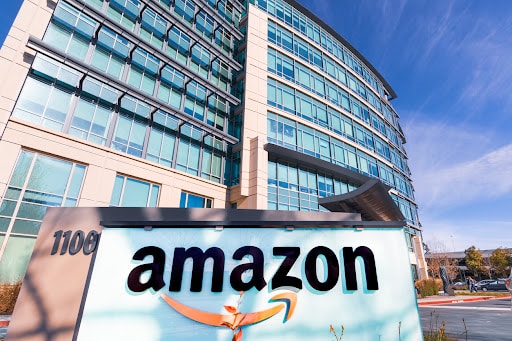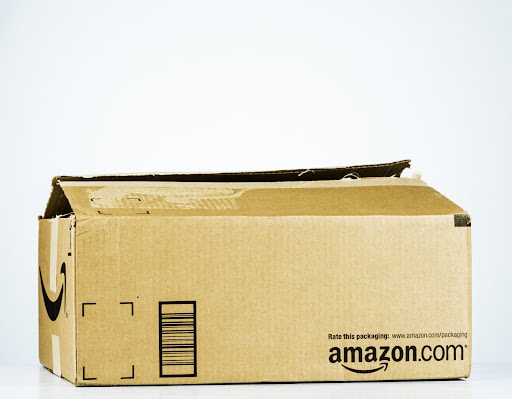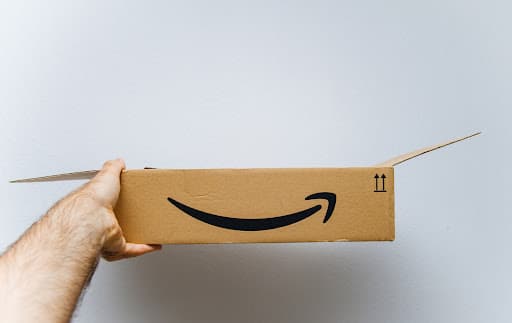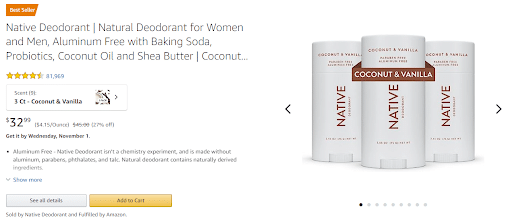Launching a successful brand on Amazon requires more than a quality product. 80% of sellers do not make more than $50,000 in monthly revenue. With over 600 million competing products and services on the platform, standing out can be an immense challenge. While 64% of brands become profitable between one to 12 months of selling on this marketplace, another 13% take over one to two years to see financial gain.
That’s where effective brand positioning comes in. This process provides a clear path to overcoming the noise and capturing customer attention. It helps shape your brand messaging, voice, and strategy to connect and resonate with your audience, helping you to establish a solid and distinct brand identity on a platform where customers are constantly bombarded with countless options. Let’s explore why brand positioning is crucial, and how to do it properly to achieve sustainable growth on Amazon.
Key takeaways
- Brand positioning is pivotal for your Amazon storefront’s success.
- In addition to differentiating your brand from competitors, brand positioning supports all other aspects of your business, including customer loyalty and increasing brand value.
- To effectively position your brand on Amazon, it can be helpful to look to other sellers who maintain a strong mission, vision, and values.
- Visual advertising with Amazon’s DSP, Sponsored Brand, and Sponsored Display options can be powerful ways to improve your brand’s positioning.
What is brand positioning?
Brand positioning refers to how you build a story around your product to occupy the minds of your target audience. It sums up what makes your brand unique, the value you provide, and how you want to be perceived.
Amazon Brand Follow helps you monitor how your brand is perceived.
Ultimately, brand positioning sets you apart from competitors and gives potential customers a reason to choose your products over others. Think of it as a lighthouse that guides customers toward your business. It shapes all marketing activities, from the language you use in listings and visual assets to the overall shopping experience you provide.
On Amazon, proper positioning earns the click and secures the sale amongst the sea of competition. For instance, if you sell luxury watches, your brand positioning would focus on prestige, craftsmanship, and heritage. Conversely, selling budget-friendly watches may position your brand as an affordable, stylish accessory for the everyday consumer. Although these provide the same function, they each have entirely different positioning strategies.

Why does brand positioning matter?
With over 9 million sellers worldwide, standing out and getting your products and services noticed takes strategic positioning. It can be a game changer for companies in saturated markets or those looking to expand brand awareness.
When done effectively, branding on Amazon also offers several benefits, including:
Establishes a unique brand identity
Positioning creates a unique brand identity that defines what your brand represents, its values, and its unique selling points. It allows you to communicate why customers should choose your products over others.
Differentiates from competitors
Effective brand positioning highlights what makes you special compared to alternatives.
By featuring your unique origin story, purpose, or process, it highlights the qualities that make your brand unique and memorable. It showcases why your products are superior or more appealing, influencing customers’ purchasing decisions.
Builds customer loyalty and trust
70 percent of customers are more likely to buy from a brand they recognize and trust.
When your brand consistently delivers on its promises, you establish an emotional connection, loyalty, and trust with your audience. Loyal customers become brand advocates.
Attracts the right audience
Brand positioning helps you understand your target customers’ needs, preferences, and pain points.
This, in turn, helps you shape messaging around your ideal customer, drawing that persona in and boosting the chances of converting them.
Maximizes brand equity and value
Brand equity is the perceived value of your brand in the eyes of consumers. Consistent positioning builds brand equity over time, differentiating your company in the market space.
A strong brand equity can command higher prices, leading to increased sales and profitability.
Creates a consistent brand experience
Shoppers like to engage with a cohesive brand, not spend their time decoding mixed messaging.
When customers experience a consistent brand image across all touchpoints, including social media, websites, and online marketplaces, it reinforces trust and recognition. It also ensures that they know what to expect from your brand every time.
Supports new product launches and scaling
Strong existing positioning provides an established platform to launch new products,
If customers already know and trust your brand, they are more likely to try new offerings, providing a ready market for new products.
Fuels strategic partnership
Effective brand positioning highlights your brand strengths, opening doors to strategic partnerships.
Other established brands are more inclined to collaborate, sponsor, or engage in other initiatives with a reputable brand. This further expands your market reach and potential.

8 tips to effectively position your brand on Amazon
Brand positioning shapes how your target audience perceives you in the competitive eCommerce marketplace. Millions of sellers compete for attention on Amazon, making thoughtful positioning even more critical.
Take the time to establish your unique space in the minds of consumers to boost awareness, trust, and sales on Amazon. Proper branding sets you up for sustainable growth.
Here are eight effective strategies to help you do just that:
1. Tell a unique story
Did you know storytelling can boost conversion rates by 30%? With stats like this, storytelling can be considered a powerful tool for effectively positioning your brand on Amazon. It’s a great way to connect with your audience emotionally while highlighting what makes you unique.
Your brand story should be authentic, personal, and relatable, showcasing the values that drive your business. Inject personality and humor where appropriate, and remember that your brand story should resonate with your target market.
For instance, TOMS emerged as a brand known for simplistic yet quality footwear with a commitment to share its product with the world, which sparked a movement amongst its shoppers. TOMS founder Blake Mycoskie is known for sharing how a trip to Argentina inspired him to build his “One for One” shoe brand. As a result, TOMS donated one pair of shoes to a needy child for every pair sold. This mission-focused story shaped TOMS’ branding and positioning and ignited buyers to purchase shoes on the premise of impactful purchasing.
2. Create a tribe
The Economic Times defines a brand tribe as “a group of people who collectively identify with the product and share similar views and notions about the brand.” The definition goes on to say that these people are not just consumers; they can also be equated to promoters.
Humans are social creatures, and we want to belong. By creating a brand tribe, you tap into the power of community and foster a loyal following that identifies with your brand’s interests, passions, values, and mission.
Build a brand tribe by engaging customers on social media and through personalized outreach. Additionally, encourage user contributions and listen to feedback. Reward loyalty with exclusive perks like early access and discounts to make customers feel part of something special.
For example, Jeep owners are notoriously passionate about their vehicles’ capabilities, and the adventures and freedom it provides. Jeep leverages this tribal mentality with its #JeepAdventures social campaigns filled with content shared by loyal brand fans.
3. Define unique selling points (USPs)
Amazon is a highly competitive marketplace, but that doesn’t mean you can’t stand out with a few unique selling points (USPs). Begin by studying competitors and identify where you meaningfully differ.
-
- What customer pain do you uniquely solve?
-
- What value do you offer that makes you a category of one?
-
- What’s your “only we do this” advantage?
-
- Is it superior quality, innovative features, or exceptional customer service?
-
- What’s your “only we do this” advantage?
Identify the strengths that make your brand unique and emphasize them in your product listings and marketing materials. Use persuasive language, compelling visuals, and customer testimonials to communicate the value your brand brings. Optimize your Amazon product descriptions, including bullet points and product attributes, to highlight your unique selling points.
For example, the phone case brand LifeProof is positioned on extreme durability. They claim to be 100% waterproof, dust-proof, drop-proof, and snow-proof; protection consumers can’t find with their competitors. The extreme durability becomes their differentiation.
4. Use targeted language
Trying to market to everyone is like wearing shoes that fit every foot—it just won’t work.
Identify your target audience on Amazon and segment them into relevant groups to effectively position your brand. Consider demographics, interests, and buying behaviors to create distinct customer profiles.
Once you’ve segmented your target audience, tailor your marketing campaigns accordingly. Use Amazon’s advertising tools, like Sponsored Brands and Sponsored Products, to reach your target audience cost-efficiently.
Language shapes positioning by speaking directly to your ideal audience. Craft messaging and visuals that resonate with each group’s needs and desires. Carefully choose descriptors highlighting your differentiators like “small-batch,” “ethically made,” or “gym owner approved.”
For instance, Vega’s protein powders use terms such as “plant-based” and “no added sugar” to target the health-conscious consumer.
5. Be consistent
According to psychologist Robert Cialdini’s Principles of Persuasion, people are more likely to purchase when you get them to commit to your brand consistently. Even Amazon itself utilizes this tactic through features like wish lists.
The principle is: we like to appear consistent and decisive in our actions.
You know that saying “Don’t judge a book by its cover”? Well, on Amazon, that’s exactly what customers do. That’s why consistency across touchpoints matters to amplify brand positioning.
Ensure branding consistency across touchpoints like your website, social pages, and Amazon storefront. Use the same logos, color schemes, fonts, imagery, and messaging everywhere, including product packaging and descriptions. Familiarity builds recognition and trust.
According to a recent State of Brand Consistency Report, 56% of businesses surveyed, said that brand consistency contributed to between 5 and 20% increase in sales. i.

6. Have excellent customer service
Customer experience (CX) is a significant competitive edge and strategic brand positioning agent.
Here’s why:
-
- 73% of customers prioritize CX when buying on Amazon,
-
- 72% of customers want immediate service,
-
- 60% of your customers will choose another brand over yours based on services they expected,
-
- 70% of consumers will spend more with brands that deliver smooth, personalized CX,
-
- 86% will pay more for a great experience.
(Source)
Set your brand apart on Amazon by providing excellent CX through fast shipping and hassle-free returns. Ensure that exchanges are seamless and communicate policies. Address customer inquiries promptly and thoroughly to let them know you care about their experience.
Additionally, provide comprehensive product details to inform purchasing decisions and establish trust. After all, your customers would rather continue shopping instead of Googling how to use your product.
7. Have strong values
The adage ‘stand for something, or you’ll fall for anything’ is most accurate in brand positioning on Amazon.
What do you believe in? What do you value as a brand? Let your customers know.
Whether it’s sustainability, inclusivity, or just making people smile, ensure your values shine through. Consumers increasingly support brands that align with their values and beliefs. But ensure you live these values long-term. Consider supporting social and environmental causes that align with your brand. Donate a portion of your profits, sponsor local events, or even plant a tree for every purchase. It’s not just good karma; it’s good business.
Additionally, be transparent about your business practices, from sourcing materials to manufacturing and pricing.
For a shining example, look at the athletic brand Allbirds. They place sustainability at the core of their company; their shoes are carbon-neutral, use recycled and natural materials, and avoid plastic packaging.
8. Use visual ad types
Visual ads are a powerful way to enhance your brand positioning on Amazon. Consider this: The human brain processes images 60,000 times faster than text. Further, 90% of the information transmitted to the brain is visual.
Visually showcasing your differentiated value via Amazon ads allows you to capture the attention of potential customers and make a memorable impact.
For instance, assume you’re a brand of premium kitchen knives. You can run video ads on Amazon demonstrating how your knives easily cut through dense foods. This showcases quality and performance.
There are also various ad formats you can leverage. These include:
Amazon DSP
Amazon DSP (Demand-Side Platform) is a programmatic advertising service that allows you to reach your target audience on and off Amazon.
It uses real-time data and machine learning algorithms to deliver targeted personalized display and video ads.
Read more: How Much Does Amazon Demand Side Platform (DSP) Cost?
Sponsored Brand Ads
These appear at the top of search results and feature your logo, a custom headline, and multiple product listings.
These are excellent for increasing brand exposure and visual identity on Amazon.
Sponsored Display Ads
These ads allow you to showcase your products on relevant product detail pages, helping you connect with potential customers when they’re actively considering a purchase.
They can boost brand and product visibility and exposure to reach a wider audience.

Amazon brand positioning examples
The following brands identify target consumers and what matters most to them, reinforcing the touchpoint of this differentiated value.
The result is a strong positioning that distinguishes them from competitors.

Bellroy
The premium wallet brand Bellroy, stands out for its unwavering dedication to environmentally responsible design and manufacturing. Despite its higher price point than competitors, Bellroy adds value by significantly reducing its environmental footprint.
Bellroy’s minimalist and contemporary visuals perfectly complement its clean aesthetic.
The product listings showcase leather sourcing and highlight the steps taken to minimize waste and the ethical factories involved in manufacturing. This sustainability-focused messaging effectively resonates with eco-conscious consumers, establishing a solid connection between the brand and its target audience.

Native Deodorant
Native Deodorant successfully tackles the significant branding obstacles of selling a commodity product in a saturated market.
They distinguish their offering by positioning themselves as the secure and natural alternative to conventional deodorants laden with aluminum and other harmful chemicals.
Their packaging showcases scents inspired by nature, such as lavender and rose, while their lifestyle imagery portrays individuals embarking on outdoor adventures. The accompanying copy emphasizes the use of “safe and simple ingredients.”
This natural positioning effectively appeals to the target consumer who prioritizes their health and wellness.
Take the First Step With Trellis
Your Amazon journey should begin with a single vital step: effective brand positioning. Crafting a unique brand identity, differentiating from competitors, and cultivating trust pave the way for growth and profitability.
For support related to Amazon brand protection, management, and protection, turn to Trellis. Our experts provide data analytics, metrics, and reporting tools to complement and measure the success of your brand positioning efforts.
Book a demo with us and start strategizing to build and scale your presence on Amazon.



